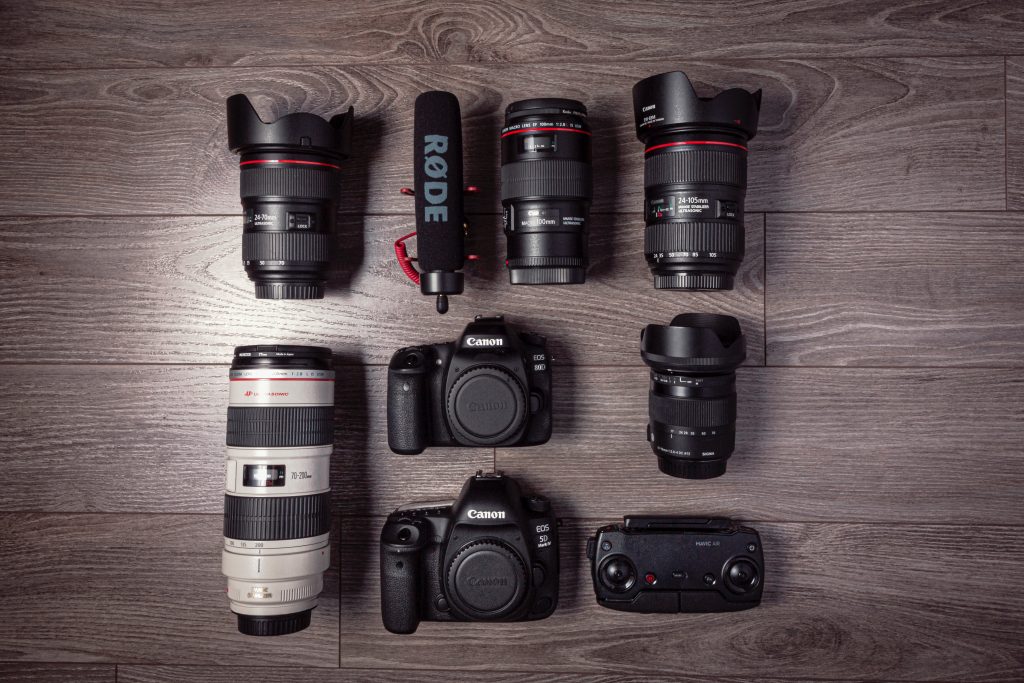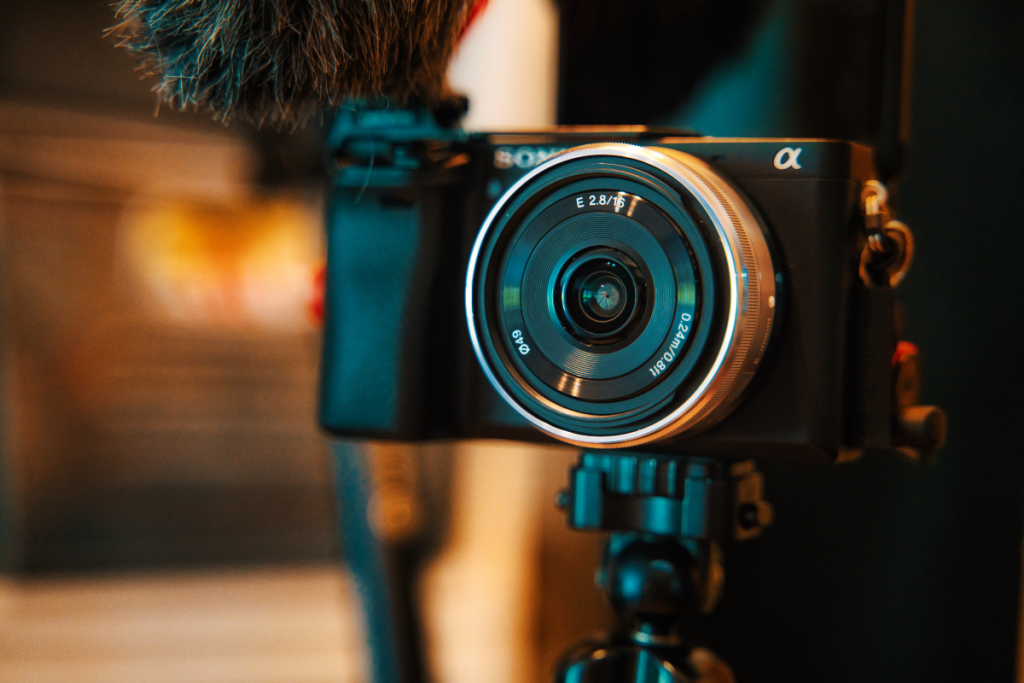Choosing the best camera for video production is a central decision for many videographers. This guide leads you down the essential features to have the best camera for videos, focusing on practical knowledge. We’ll explore the difference between mirrorless (MILC) and DSLR cameras, what kind of essential accessories you need and how to choose the right video editing software. By the end of this article, you’ll have a clear understanding of which is the best camera for videos, considering your unique needs. Start exploring and find your perfect video companion now!
Why is it important to choose the best camera for videos?
Selecting the ideal camera for your specific needs is critical because it greatly impacts the result at the end of your work. Each camera type comes with its unique set of features and capabilities, making some better suited for certain tasks than others.
If you are a filmmaker you might require your camera with a large sensor and cinematic color grading options, whereas as a vlogger might prioritize a camera with excellent autofocus and a lightweight. When you choose the best camera for your needs, the decision should include a lot of factors like ease of use, compatibility with accessories, portability, and overall workflow efficiency. It’s about finding the proper technical requirements, which are in alignment with your creative goals, to reach the best result. Now, let’s have a look at these infos.
What is the difference between mirrorless and DSLR cameras?
Let’s start at the beginning and see what is the basic difference between a mirrorless and DSLR camera. This knowledge not only informs your purchase decision but also impacts your videography experience and output quality.
Mirrorless Cameras (MILC)
Mirrorless cameras, as the name suggests, do not have mirror mechanisms, like DSLR. The light passing through the lens goes directly to the sensor, which provides a digital preview of the image either on the camera’s screen or through an electronic viewfinder (EVF).
Key advantages:
- Size and weight: Without the mirror apparatus, these cameras are significantly smaller and lighter
- Advanced autofocus: Mirrorless cameras typically have superior autofocus systems, employing on-sensor phase detection for rapid and accurate focusing
- Silence: The elimination of the mirror slap reduces operational noise
DSLR Cameras
DSLR (Digital Single-Lens Reflex) cameras use a mirror mechanism to direct light from the lens to an optical viewfinder. When you take a photo or video, this mirror flips up, allowing light to hit the image sensor.
Key advantages:
- Optical viewfinder: The optical viewfinder in DSLRs allows for a direct and natural view of your subject, without any digital processing,
- Battery longevity: The less reliance on electronic viewfinders and LCD screens results in longer battery life
Why does understanding this matter?
Choosing between a mirrorless (MILC) and a DSLR camera affects not just the quality of your videos but also your workflow, style, and comfort level while shooting.
Our opinion is for video making mirrorless (MILC) is a better choice. Mirrorless cameras excel in video making due to their advanced autofocus systems and superior electronic viewfinders, providing real-time, accurate previews, and their compact, lightweight design offers greater flexibility and ease in various shooting conditions.
Additionally, they often feature cutting-edge video technologies like 4K recording and image stabilization, making them ideal for high-quality, dynamic videography. So, if there are no other crucial preferences, which require you to use a DSLR camera, go for mirrorless!
Here we are adding a note that cameras of mobile phones have been getting better for years. MILCs are still better than phones, but this is no longer the case with DSLR cameras.
What are the key features to consider when choosing the best camera for video?

1. Size of the sensor
Larger sensors (like full-frame or APS-C)are better if you are making videos. Their performance is greater in low-light conditions. Also they have the ability to achieve a shallower depth of field. This results in more cinematic and professional-looking footage, distinguishing the subject clearly from the background
2. Flexible frame rate
A higher frame rate (60 fps) is fundamental for capturing smooth video. If you want to make slow-motion effects, having a higher frame rate (120, 240 fps) is especially important. Besides, in post-production you have more flexibility with a camera which offers a range of frame rate options.
3. Resolution
Nowadays full HD and 4K are the minimum standard. 4K provides four times more pixels than full HD, so if you create content for big screens, it is worth considering creating records in 4K.
What are the essential accessories?

The camera to hold
- Gimbal: If you are making moving, handheld videos, a gimbal is invaluable. It provides stability and fluid motion, countering hand tremors and sudden movements.
- Tripod: For static records, a tripod is essential. Before you choose your tripod, take into consideration in which conditions you will use it and how much weight it has to hold.
Capturing sound
- DSLR Microphones: Sound quality is as crucial as visual quality in video making. An external DSLR microphone significantly improves audio capture, reducing ambient noise and focusing on the intended sound source.
Lighting
- Softbox: Good lighting is key to professional-looking footage. Controlling the light can dramatically improve the quality of your scenes.
How to choose the right video editing softwares?
Before you choose a video editing software, take into consideration the following:
Operating system compatibility: The software you select must be compatible with your operating system. For example, Final Cut Pro is not suitable for Windows users, and Magix Video Pro is only compatible with Windows.
Budget constraints: Consider whether the software is available for free, as a trial, or requires a subscription or one-time purchase. Free trials are recommended to test the software before committing, especially if working with a limited budget.
Trial before purchase: It’s advisable to opt for a free trial version of the software before making a final decision. This approach allows you to evaluate whether the software meets your project needs without immediate financial commitment.
Let’s explore two of the leading video editing software options in more detail:
Advantages:
- Extensive range of editing tools
- Seamless integration with Adobe Creative Cloud apps
- Supports a wide variety of video formats
- Compatible with footage from various camera types
- Collaboration tools for team projects
- Regular updates with new features and enhancements
- Cross-platform compatibility (Windows and macOS)
- Robust color grading and audio editing options
Disadvantages:
- Users report frequent system crashes
- Difficult to learn
- Confusing menus and feature options
Advantages:
- User-friendly, intuitive interface
- Unique magnetic timeline feature
- Advanced media organization tools
- Optimized performance for Apple hardware
- Efficient handling of 4K and larger resolution videos
- Built-in sound and color correction tools
- 360-degree VR editing support
- Exclusively available for macOS users
Disadvantages:
- Not compatible with Windows or Linux
- Outdated fonts and presets
- Lack of integration with Adobe and other add-on software
Wrap-up
In summary, selecting the best camera for videos involves understanding your main needs. After that you can consider factors like sensor size, frame rate, and resolution. Your choice should align with your specific needs, whether it’s for lightweight flexibility, advanced autofocus, or long battery life. Explore further resources for in-depth guidance and make an informed decision to capture your creative vision effectively.